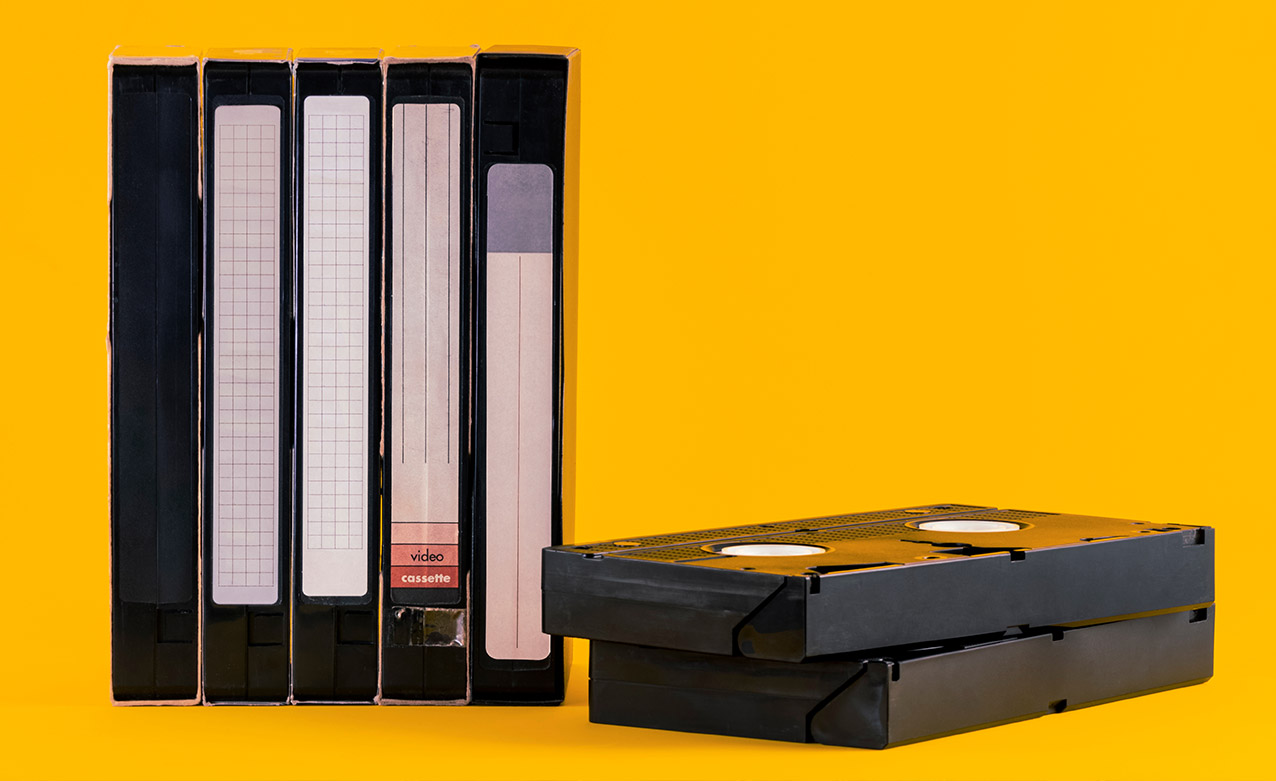Table of Contents Show
With spooky season creeping across the horizon and the urge to start curling up inside with a warm drink and a scary movie rising from its grave, it’s no surprise that people are on the hunt for something to fill that urge. Analog horror has exploded in popularity recently, being a go-to discussion point on Reddit forums, YouTube comments sections, and other social media platforms.
Drawing from the crunchier days of analog media as the name suggests, analog horror has a unique way of seeping into the collective consciousness of its viewers, with, for example, popular series The Backrooms (2022) by Kane Pixels having over thirty-nine million views on its first installment as of writing. It’s a bit ironic that a digital platform like YouTube has created the perfect environment for analog horror to thrive, but the evolution of film’s “found footage” takes every single advantage being housed on YouTube gives it and runs, turning into something truly horrific.
Film stylings that take cues from home video or VHS tapes aren’t anything new, not if found footage movies dating back to the late 90s are anything to go by, so why is it that analog horror seems to have spawned from the online ether from nothing? There must be something binding these videos together, clawing their way to the front of the pack like the Creepypastas and Marble Hornets (2009) before them.
Beneath the static of old TV broadcasts and shaky camcorders, analog horror strips itself of all of the veneer and fame, and safety of Hollywood productions, delivering terror that can make the most seasoned horror fan sleep with the lights on (certainly not speaking from experience here), so for fans new and old, here’s a breakdown of a genre that’s very keen to stay.
What Is Analog Horror, Exactly?
It’s a bit hard to pin down what analog horror exactly is, only because by this point the works that claim the title vary wildly in scope and execution. Looking at the Wikipedia definition, it claims analog horror “is characterized by low-fidelity graphics, cryptic messages, and visual styles reminiscent of late 20th-century television” ((“Analog Horror.” Wikipedia, Wikimedia Foundation, 23 Sept. 2022. )) That definition, however, leaves out a host of works that incorporate old 8-bit and rough polygonal PlayStation 1 era games, website ARGs (alternate reality games), and the occasional inclusion of active phone numbers that deliver more of the narrative.
Instead, it could be more beneficial to include tropes common to the series to define it best, something Aiden Chick, a producer of three analog horror series himself, agrees with. Typically, analog horror uses pre-existing mediums (which is to say mediums that already exist in a recognizable form in the vein of emergency broadcasts or dated early-2000s webpages) from a second-person perspective to tell a horror narrative (( Pad Chennington and AidenChickTV, directors. What Is Analog Horror? YouTube, Pad Chennington, 12 Feb. 2021. )).
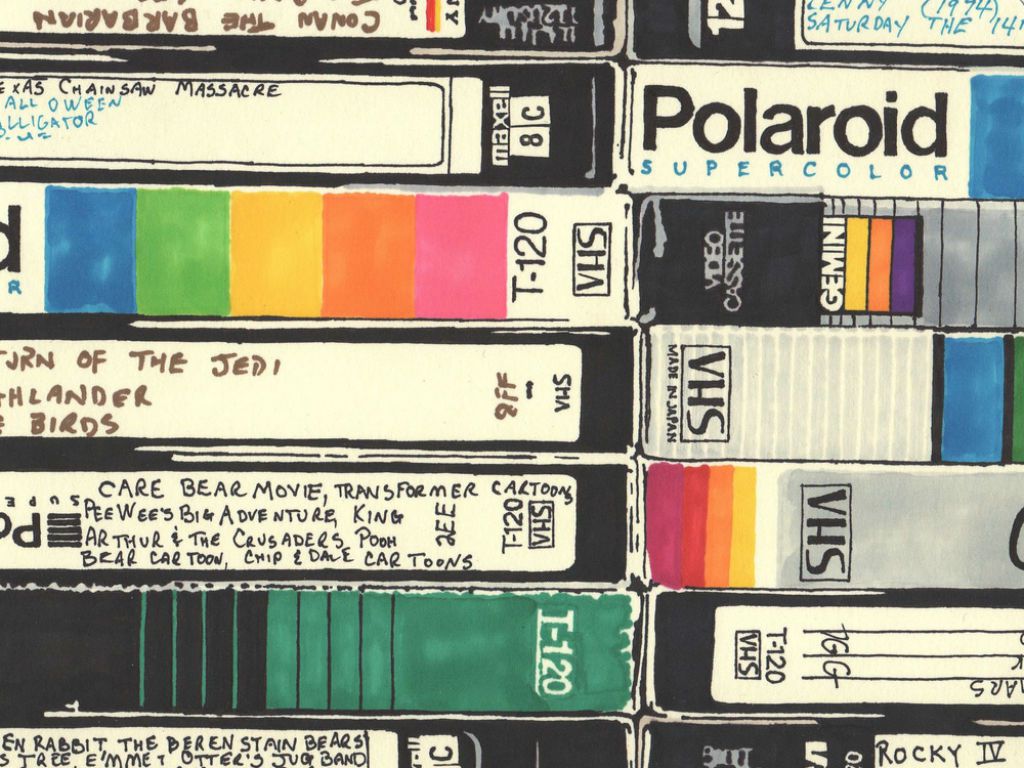
YouTube thrives with this second-person perspective because, unlike traditional film, it allows for experimentation and room for error, encouraging analog horror makers to push boundaries and intentionally build something viscerally relatable compared to productions that require more direct polish that separates audience and film. Imagine watching a video freed from clean camera work and sound design — it is a video made completely by an amateur. Each footstep shakes the camera, and each breath is heard on the microphone. Or, rather, a PSA announcement meant for no other audience than the person watching it, a direct message to the view, all degrees of separation knocked down except for a single screen. Unlike “produced” horror, analog horror’s subject is the same as its audience: you.
Partly because of this and the wide bracket of topics and formats it can fit into, analog horror proves itself extremely flexible. It acts as both an easy genre to get into thanks to its aforementioned loose criteria as well as its template-esque storytelling (in the sense it uses existing and already understood mediums) featuring a low bar to entry. Most series come in bite-sized chunks as well; Gemini Home Entertainment’s (2019) longest video clocks in at a little over eight minutes, with the average being closer to five, and another popular series, The Mandela Catalogue (2021) has around an hour’s worth of content spanning its three “volumes,” making them easily digestible (subject matter notwithstanding). These bite-sized mini-films, coincidentally have a long, long history on YouTube, even if it took some time for the exact feel of analog horror to blossom into fruition.
The Roots Of Analog Horror
It’s fair to say analog horror would never have reached the still-climbing heights it has yet to fully realize without YouTube. It isn’t revolutionary to say YouTube finds itself as the host to some weird, weird pieces of content. Considering it costs nothing to post to the platform and, the spaghetti pile of wires that makes up monetization rules aside, there are only a few common-sense limitations on what cannot be posted. Even then, age restrictions and content warnings fill most of those gaps — basically, if a movie-goer can see something in a film in a public theater, they can see it in a YouTube video. YouTube came into being just in time to capitalize on the content contained in another outlet for horror: the Creepypasta.
No one is sure where the term came from or where the first story arose, but think of Creepypastas as both an extension of urban legends and campfire stories — they act almost like digital oral tradition, passed around between forums and websites and chain emails (less so nowadays, but the tradition still remains on the actual Creepypasta website established in 2008 and in Reddit forums like r/nosleep) (( Casey, Dan, director. Creepypasta: A Brief History (The Dan Cave w/ Dan Casey). YouTube, Nerdist, 22 Aug. 2018. ))
Creepypastas act not just as a source of horror in the modern age, but also as a brilliant case study in both what topics can truly sink deep into the internet’s psyche, and how quickly these stories spread like wildfire, with the most convincingly real ones earning the most notoriety. YouTube gave budding film artists and horror aficionados alike a platform that could add a real “oomph” to any Creepypasta story they made — after all, besides images, what’s more convincing of legitimacy than seeing video of the story in question?
Even besides analog horror, videos titled “Top 10 Accounts of Ghosts” and genuine horror series populate YouTube. Some have a higher production value than others, some genuinely try to act as catalogs for weird occurrences, but the key thread between them is that they take advantage of the phrase seeing is believing. This is what analog horror seems quite keen on capitalizing on — immersing the audience in the series as much as possible, and drawing as much engagement as possible to make the story as indistinguishable from reality as it can.
Why Analog Hits The Right “Wrong” Notes
People like what is familiar, and there is not much debate to be had there. The familiar is comforting in a way the unfamiliar absolutely is not, but if one thing holds the mantle of being worse than the unsure, it’s something that takes the familiar and twists it into something foreign. In a way, this idea plays on an uncanny valley type of approach where things that are human-like or, broadening the scope a little, natural-esque, fail to pass the threshold of passing, falling flat as a pale imitation of the actual thing (( Saucier, Emily. “What Makes Things Creepy?” The Delta Statement, The Delta Statement, 13 Apr. 2022. )). Masks, for example, look like they should move, look like they should emote, but they stay static and unfeeling — plenty of people dislike clowns and dolls for the same reason because they read as “off.”
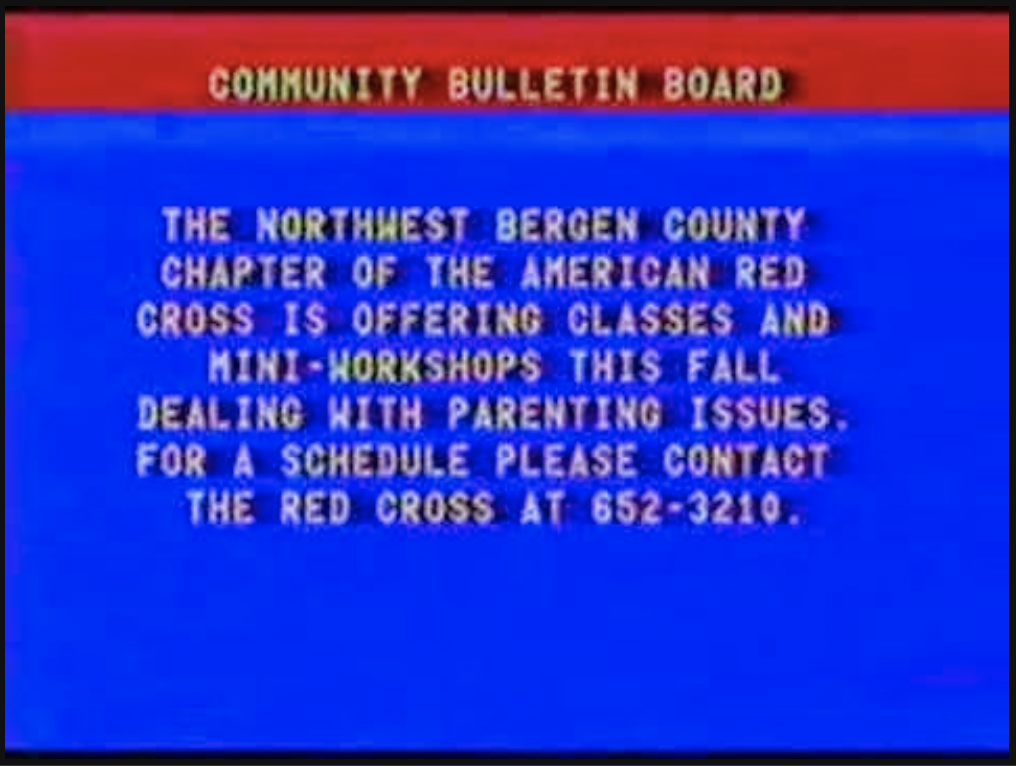
People of the age to have experienced VHS tapes and old public broadcast channels might remember them with a degree of nostalgia— remember when, late at night, the news ended and the classical music kicked on and the now-defunct community bulletin board started airing? Remember waiting for your favorite VHS tapes to finish rewinding so you could play them again? Remember the grainy static of a tape trying to depict a shaky, unprofessional home video? Those who make analog horror are either just old enough to have distorted childhood memories of the age of analog, or are old enough to remember exactly how it was. These are the memories analog horror plays off of, skewering memories of times past and memories barely formed in the first place.
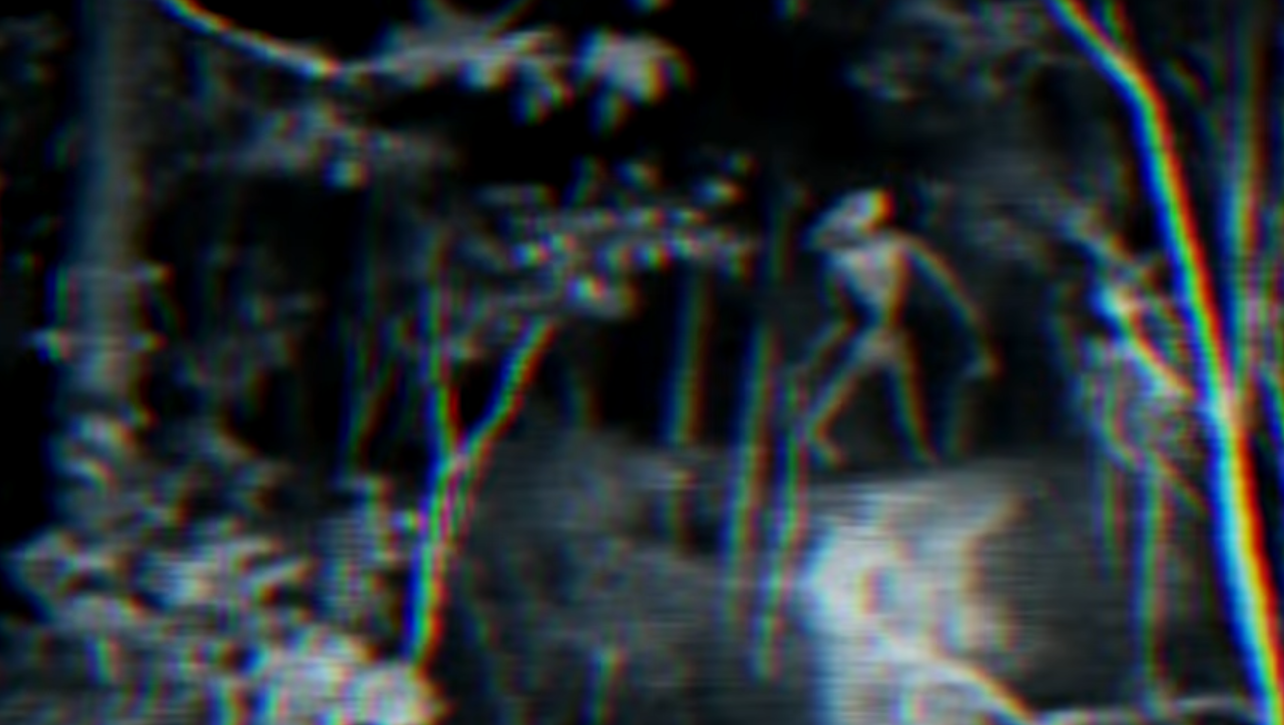
Local 58 (2015) by Creepypasta-veteran Kris Straub is generally charged with kicking analog horror into the genre it is today, and it is a prime example of playing with the past. Local 58 (2015) riffs entirely off of old public broadcasts and public service announcements, taking familiar, nostalgic, and even comforting memories as a device to ground the environment of the narrative and make the psychological horror all the more distressing. Seeing a public broadcast warning, something already deeply unsettling, shift back and forth between reassurance and urgency invites a real sense of helplessness and confusion that wouldn’t quite hit the same if it was crisper, more modern, considering the ease of video and photo-doctoring modern software allows these days (( T3rr0r, director. Analog Horror and What It Means to Be Human. YouTube, 14 May 2022. )).
Analog horror takes advantage that you, the audience, are the one placed in the situation, are the one directly watching the broadcast or tape, and that you, the audience, will inherently place yourself in the world of the broadcast because that’s what home videos and public broadcasts and announcements do in the first place: they either are designed to grab attention, encapsulate a personal memory, or, in the best cases, designed to play off of both.
Aside from this, there’s one other piece of analog horror besides the YouTube videos, and that would be the websites, the games, and the phone lines — in other words, interactive segments.
Building Horror By Building A World
Interacting with something makes it all the more real, and hunting for clues and lore in real-life venues helps to drag horror out of fiction and right into reality. Still using Local 58 (2015) as an example as it was one of the first series to start this trend just as it did the genre as a whole, Local 58 not only includes a phone number in one of its videos where viewers can call to receive a coded audio message, but it has an entire website filled with hidden elements and broken links that need to be pieced together to reveal more information about the series proper. Game Theory has a video that includes them making their way through the website specifically, but for now, it’s not the contents of the website that matter so much as the very existence of the website in the first place.
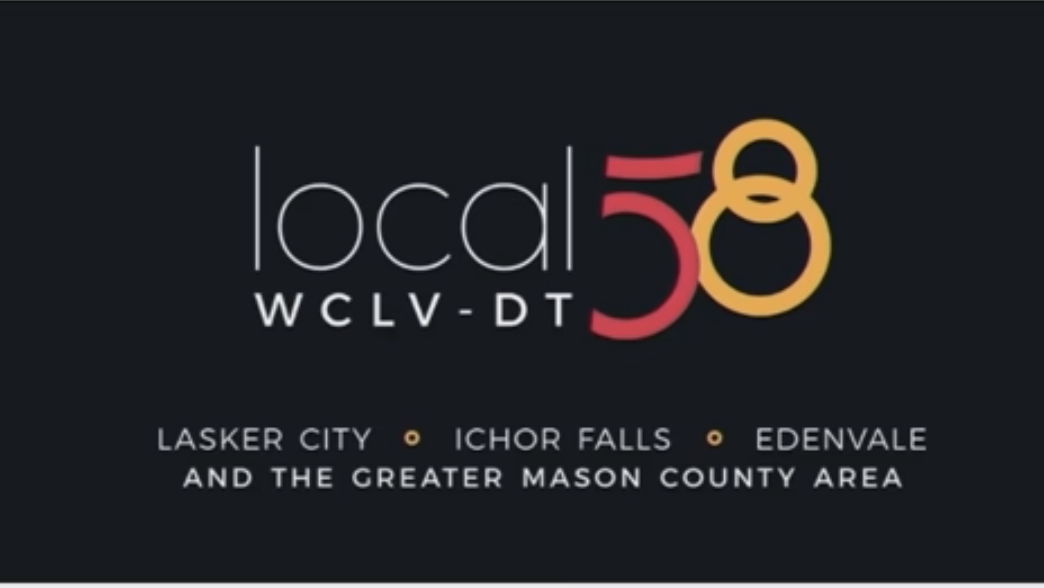
ARGs, or alternate reality games, are games that use various platforms to tell a story (( ARGology. “What Is an ARG?” ARGology, 2008. )). Not all analog horror series include ARGs and not all ARGs involve analog horror, or horror in general really, but a strong overlap between the two still exists because ARGs are one way to boost immersion and realism. By including parts of the narrative that requires the audience to go out and search for answers, it not only builds community but makes the story seem all the more real and credible
The term hyperdiagesis refers to the idea that a massive expanse of a world can exist entirely blocked off from the reader because of the sheer scale of the narrative — only the tip of the iceberg can ever be seen (( Smith, Aaron. “Transmedia Storytelling in Television 2.0.” Transmedia Storytelling in Television 20 RSS, Middlebury, 2009. )). That is what ARGs bring to the table in regard to analog horror, and why they are featured in so many series. Much like being unable to fully perceive the monster in the dark, ARGs ensure that the audience keeps on the hunt for answers, keeps engaging with the series and its world, and keeps the horror growing.
A Few Series To Check Out
Being as diverse as it is, analog horror has a lot to offer. While a handful of series already got their mentions here, it’s worth going a bit deeper to point out ones worth checking out first or give other ones their chance in the spotlight. As a bit of a disclaimer, however, keep in mind that these are only a few to get started because there are hundreds of series out there (The Monument Mythos (2020), YouTube user Battington’s numerous series to name a couple more) completely free of charge. Basically, if none of these spark anything, there are so, so many more out there on YouTube, Reddit, Twitter, Tumblr, and YouTube comments are all great places to find other recommendations, but for now, here are a few recommendations prepped and ready.
Kane Pixels’ The Backrooms (2022)
The Backrooms (2022) knocked it out of the ballpark with its first episode and Kane Pixels has since continued releasing visually impressive and narratively riveting videos with a mix of near-indistinguishable live-action and Blender-created settings. Featuring compositions likely familiar to fans of traditional found footage, The Backrooms (2022) has a good mix of being able to understand the narrative without having to go check other websites and hidden YouTube videos while still offering the type of engagement that viewers want.
Inspired by liminal spaces and a viral 4chan post of a yellow room, The Backrooms (2022) plays with corporate expansion, unreality, and classic monster scares. It isn’t connected to the dizzying lore of the Creepypasta “Backrooms” of the same name the original picture inspired, meaning viewers don’t need to comb a wiki to jump in. Focusing on both the organization responsible for the titular Backrooms and the individuals unfortunate enough to clip through reality into them, The Backrooms (2022) is far from its endgame and plans to deliver for what seems to be a good long while.
Mystery Flesh Pit National Park (2019) by Trevor Rogers
Earning the honor of having a Snopes article debunking the existence of the aforementioned park, Mystery Flesh Pit National Park (2019) started as a worldbuilding post on Reddit that now finds its home on a Tumblr blog and a smattering of YouTube videos, a great example that analog horror manages to span mediums. Out of the three series recommended here, this is the only one, as of now, that is complete and finished.

Detailing the story of the creation of a National Park in the continental US, the park itself was housed in a massive subterranean creature of unknown origins and scale before a catastrophic incident in 2007 that caused the park to shut down. This series really takes care to build up its world and create a detached, almost banal sense of normality when it comes time to deliver the actual horror, which really only serves to elevate the situation to the audience. The series isn’t near as heavy on video mediums, making it nice for viewers looking for a series they can read and interact with at their own pace.
Alex Kister’s The Mandela Catalogue (2021)
Speaking outright here, The Mandela Catalogue (2021) is the first series in a long time that actually got me to sleep with the lights on. Playing on ideas of Christian iconography, invasion, and body horror, more than the other two listed here The Mandela Catalogue (2021) uses “traditional” analog horror elements like broadcasts, VHS, and actual old biblical cartoons as narrative vehicles. Creatures known as “alternates” pray on fear and replace individuals to continue the cycle, building a unique and extreme sense of paranoia unmatched by the other two series in this section.

While The Backrooms (2022) and Mystery Flesh Pit National Park (2019) tell their narratives non-linearly, The Mandela Catalogue (2021) keeps things (mostly) in order. It also boasts a short runtime and, as mentioned briefly, has a runtime that hits around an hour to two hours, depending on how dedicated you are to seeing supplementary videos and ARG content. Suffice it to say, if you want a series that hits hard and hits closer to the “analog” of analog horror, this is the series for you.
Stripping Horror Bare
Analog horror is a new genre of horror that’s managed to distinguish itself from found footage astonishingly quick, carving an entirely new niche for creators and audience members alike. Taking childhood nostalgia and the familiarity and safety of old broadcasts and home videos, analog horror flips this entirely on its head to deliver psychological blow after blow, and its chosen platform YouTube leaves the horror of analog horror free to be raw, compelling, and entirely unconcerned with creating barriers between the audience and the film in question — quite the opposite, actually.
Keen on whipping up community engagement through ARGs and theory discussion and constantly pushing the barriers of the genre in an environment ripe for experimentation, analog horror continues to offer a wealth of content that doesn’t seem apt to take its terror elsewhere for a long, long time.
